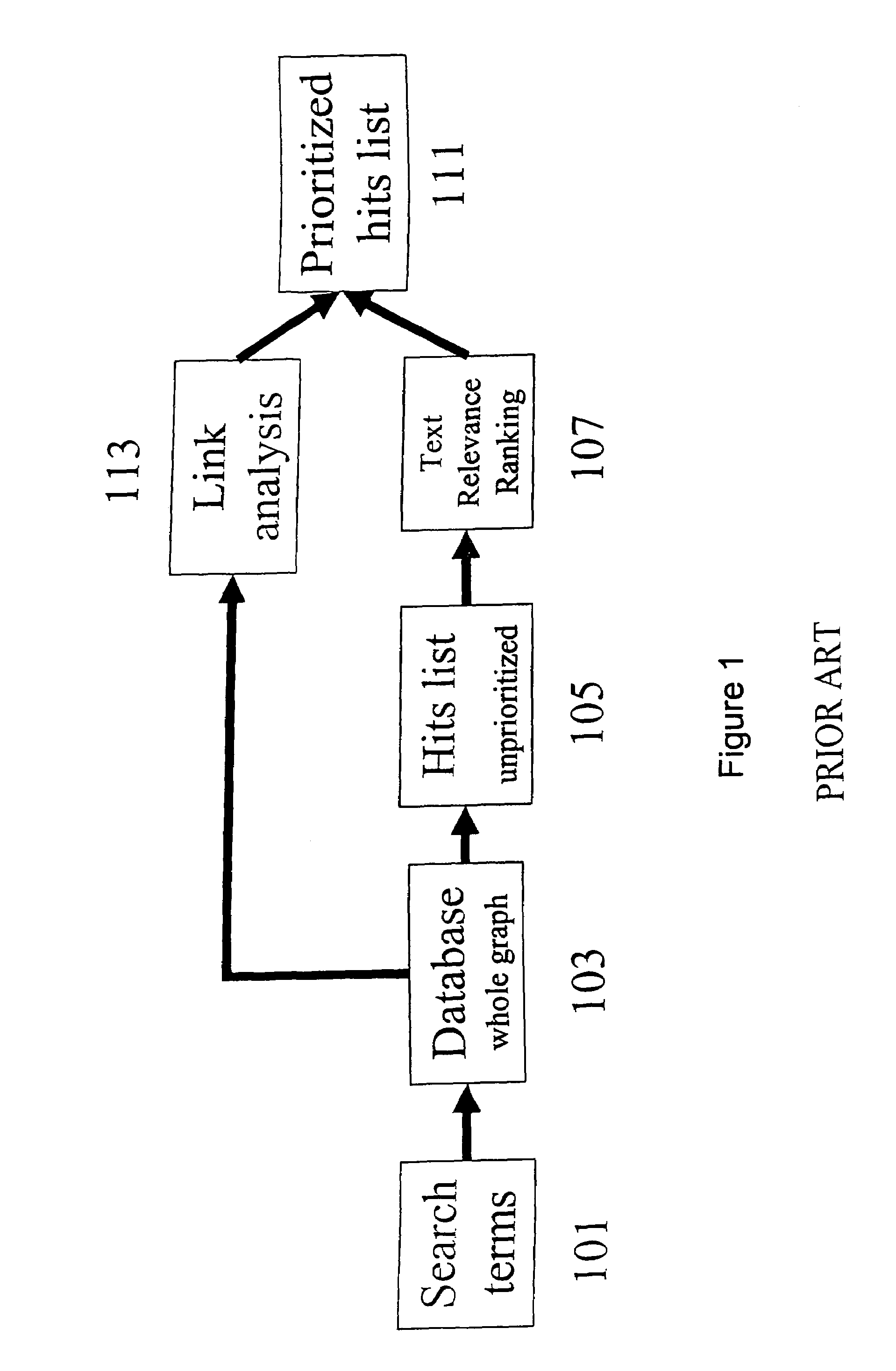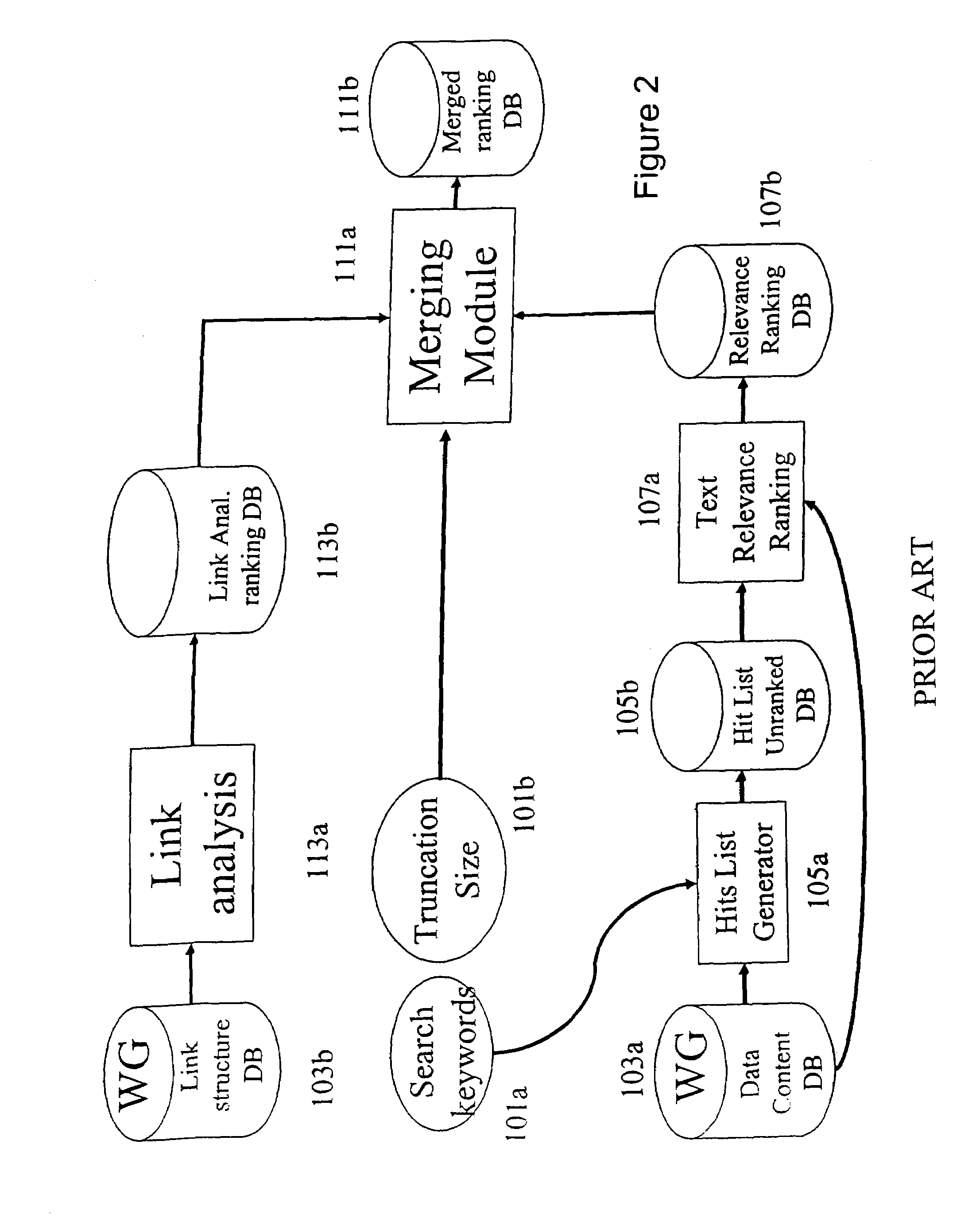Backward and forward non-normalized link weight analysis method, system, and computer program product
a weight analysis and backward and forward technology, applied in the field of backward and forward non-normalized link weight analysis methods, system and computer program products for ranking information sources, can solve the problems of easy foolhardy and easy to fool the simple weighting approach, artificially high indegree, and easy to lose good hits in a sea of mediocre or irrelevant hits
- Summary
- Abstract
- Description
- Claims
- Application Information
AI Technical Summary
Benefits of technology
Problems solved by technology
Method used
Image
Examples
Embodiment Construction
[0056]In the present invention, the determination of weights of nodes in a graph requires repeated application of one of two non-normalized operators, hereinafter noted as the F operator and the B operator. In general, the weights change with each application; but after many iterations, the weights settle to stable values which are the result of the calculation.
[0057]First we discuss the implementation of the F operator. Let w(i) be the weight at node i at a given iteration. The F operation places the weight w(i) at each of the nodes j which are linked to i by a link pointing from i to j. F does this for every node i in the network. Hence the result of one application of F is:
[0058]w(j)(new)=∑i->jw(i)(old)
where
[0059]∑i->j
is the sum over those nodes i pointing to node j.
[0060]Since the total weight on the graph grows with each iteration, the weights must all periodically be reduced by a constant factor, in order to keep the weights from growing to numbers which cannot be handled...
PUM
 Login to View More
Login to View More Abstract
Description
Claims
Application Information
 Login to View More
Login to View More - R&D
- Intellectual Property
- Life Sciences
- Materials
- Tech Scout
- Unparalleled Data Quality
- Higher Quality Content
- 60% Fewer Hallucinations
Browse by: Latest US Patents, China's latest patents, Technical Efficacy Thesaurus, Application Domain, Technology Topic, Popular Technical Reports.
© 2025 PatSnap. All rights reserved.Legal|Privacy policy|Modern Slavery Act Transparency Statement|Sitemap|About US| Contact US: help@patsnap.com



